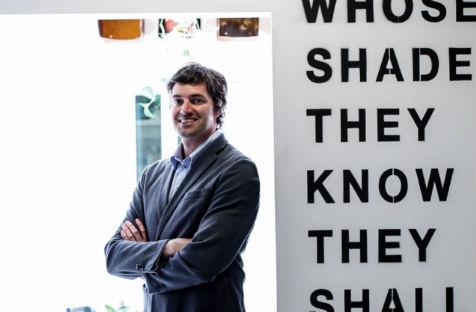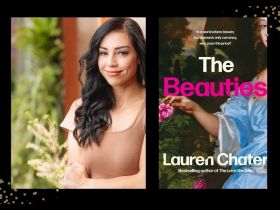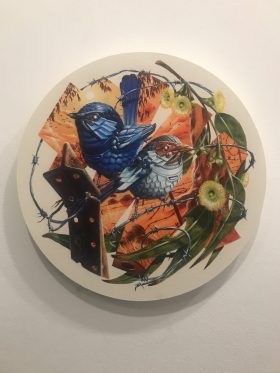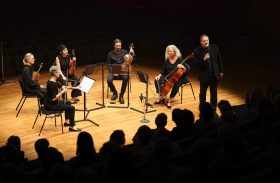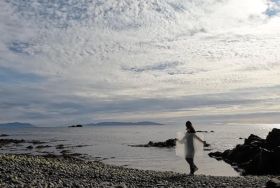Perth is a city of great creative potential and is in the midst of unprecedented growth as the mining boom continues. However, the state’s development must now more than ever recognise the value of arts, culture, creativity, vibrancy, innovation and entrepreneurship if it is to properly benefit from the boom times.
For at least the next 5 to 10 years a vision for city and state must look beyond the ongoing development of mining or extractive industries. We need to add a human element to hard infrastructure and urban sprawl planning to ensure ideas and innovation are seeded, encouraged and to the region is future proofed. This will enable the region to live up to its true potential.
As the 9 March state election looms, this type of vision is unfortunately missing in the approach to government by each contending party. A voice for a creative Perth, and its arts, culture and vibrancy is needed.
I believe WA must work to build a ‘creative and cultural ecosystem’, centred in Perth but also present in and connected to other cities and the regions, in which the ‘creative heart’ of the arts and culture sector is able to seed and inspire ideas, innovation, networking and collaboration throughout the economy in a way that reflects the west’s own needs and unique identities.
By focusing on this ‘creative heart’ we can build engaged, connected and responsive audiences, businesses and communities. This leads to a self supporting and sustainable cycle of ongoing and continued growth both economically and culturally. It will also lead to extended creative capacity.
This ‘ecosystem’ has many benefits to the current state. Based around a strong ‘traditional’ arts and culture sector, it can be extremely beneficial to people’s lives. The city vibrancy that arises from a range of quality and easy to access arts, cultural and entertainment options makes for a happier, engaged and interactive population, where people experience life in richer ways.
The flow on benefits to health and wellbeing, including mental health, are obvious, which itself becomes a driver of a productive city. This vibrancy is also likely to attract and retain people to the state to sustain growth, and avoid the ‘brain drain’ of talent or skills, or ensure new arrivals are likely to enjoy WA and stay.
There are also other more immediate benefits of the ‘arts and cultural heart’, such as safer streets and communities due to a more engaged population moving about the city outside of the usual ‘peak’ times.
Networks are also created through engagement and interaction with the “creative heart” activities, restaurants and bars, and our ability to make connections in many areas of our lives is greatly enhanced, for a range of benefits from social to professional and a cycle begins to take effect.
There is also the clear economic boost from arts and cultural activities, where a ratio of “3 to 1” is often cited as the net benefit resulting from investment in arts or cultural events, plus the immediate job creation.
Our children are also likely to benefit in education from exposure to a wide range of artistic, cultural and creative works in their environment.
However, the much stronger benefit of this ecosystem is the flow on to the wider economy via ideas and innovations seeded in the ‘creative heart’. I won’t cover this in detail, as David Throsby did an excellent job in his article Why the Arts are a central force in the economy and will I also hope be recognised in the National Cultural Policy due this month.
If Perth and WA are to survive the downturn, or even end, of the mining boom and remain competitive, resilient and prosperous in our rapidly changing world, we must have the ability to look beyond the industrial skills and wealth and invest now in arts, culture, vibrancy and creativity.
But while the benefits of arts, culture, creativity, and this ‘ecosystem’ are there, I fear they are not being paid due attention in Perth or WA.
While a concerted effort is being made to improve infrastructure to allow room for more arts and culture, such as King’s Square ‘citylink’ of Perth CBD to Northbridge or the maligned Elizabeth Quay designed to do the same between city and river, the ‘human element’ does not seem to be there.
Any new West Australian government from 9 March needs to take heed of this truth, and see that building a strong ‘arts and culture’ sector and vibrancy, livability and creativity in Perth is a crucial step in our growth.
This can take many forms, from ensuring the currently under-performing public transport system is fixed (separately from building a new system) allowing artists or entrepreneurs to stay viable, audiences to be mobile, younger people not to be cut-off or alienated from activity, and all others to remain productive, connected and not congested, as the state grows.
Similarly, reducing the wider range of ‘red tape’ or bureaucracy hindering new business, events or interactions, beyond just liquor or food outlets.
Crucially, the arts and cultural sector itself must, at the ‘heart’ of this all, be properly funded and invested in, and its institutions developed.
But above all, the human element of WA’s people must be recognised, in changes to the areas of planning, local government reform and so-on.
If we are to realise Perth’s potential as a 21st century city, we need to invest in the ‘heart’ of arts, culture, creativity and vibrancy, and it needs to be led by government.
